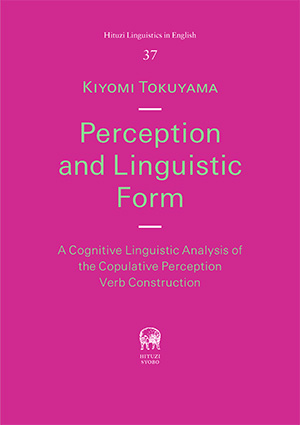2024年4月刊行

Hituzi Linguistics in English No.37
Perception and Linguistic Form
A Cognitive Linguistic Analysis of the Copulative Perception Verb Construction
Kiyomi Tokuyama(徳山聖美著)
菊判上製カバー装 定価11000円+税
ISBN978-4-8234-1211-0
ブックデザイン:白井敬尚形成事務所
 |
Hituzi Linguistics in English No.37Perception and Linguistic FormA Cognitive Linguistic Analysis of the Copulative Perception Verb ConstructionKiyomi Tokuyama(徳山聖美著) 菊判上製カバー装 定価11000円+税 ISBN978-4-8234-1211-0 ブックデザイン:白井敬尚形成事務所
|


